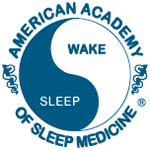 A new study reports that teen sleep patterns may be disrupted by a lack of exposure to morning sunlight.
A new study reports that teen sleep patterns may be disrupted by a lack of exposure to morning sunlight.The study took place at a middle school in Chapel Hill, N.C., that has good daylight design. South-facing skylights allow plenty of natural light to enter nearly all spaces of the building.
Eleven eighth-grade students wore orange goggles for a five-day school week. The goggles prevented short-wavelength, “blue” light from reaching their eyes.
This light plays an important role in helping to set the body’s circadian clock. This timing system helps regulate sleep and wakefulness.
In the evenings the researchers measured the children’s “dim light melatonin onset.” This is the time when the body produces more melatonin.
This hormone is a “darkness signal” for the body. Sleep tends to occur about two hours after melatonin onset.
Results show that melatonin onset was delayed about six minutes per day. This added up to a delay of about 30 minutes by the end of the week.
The authors report that this delay may contribute to later sleep times and shorter sleep durations in teens. Early school start times may contribute to the problem by reducing exposure to morning sunlight.
“These morning-light-deprived teenagers are going to bed later, getting less sleep and possibly under-performing on standardized tests,” lead researcher Mariana Figueiro said in a news release. “We are starting to call this the teenage night owl syndrome.”
Figueiro added that the problem can be solved by designing better school buildings. One sponsor of the study was the U.S. Green Building Council.
“The situation in schools can be changed rapidly by the conscious delivery of daylight, which is saturated with short-wavelength, or blue, light,” she said. “Delivering daylight in schools may be a simple, non-pharmacological treatment for students to help them increase sleep duration.”
Figueiro is the program director of the Lighting Research Center at Rensselaer Polytechnic Institute in Troy, N.Y. At LRC they have created a small device called a “Daysimeter.” It measures a person’s exposure to short-wavelength, blue light.
Read more about sleep and teens.







No comments:
Post a Comment